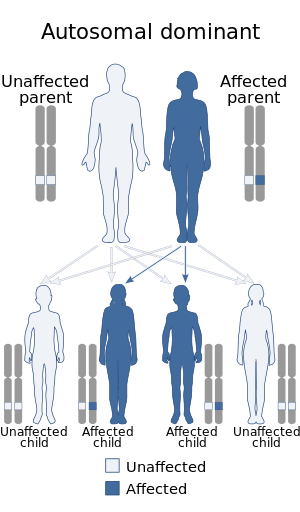Bannayan-Zonana syndrome
| Bannayan–Riley–Ruvalcaba syndrome | |
|---|---|
 |
|
| Autosomal dominant | |
| Classification and external resources | |
| ICD-10 | Q87.8 |
| OMIM | 153480 |
| DiseasesDB | 31337 |
| MeSH | D006223 |
Bannayan–Riley–Ruvalcaba syndrome (BRRS) is a rare overgrowth syndrome and hamartomatous disorder with occurrence of multiple subcutaneous lipomas, macrocephaly and hemangiomas. The disease is inherited in an autosomal dominant manner. The disease belongs to a family of hamartomatous polyposis syndromes, which also includes Peutz–Jeghers syndrome, juvenile polyposis and Cowden syndrome. Mutation of the PTEN gene underlies this syndrome, as well as Cowden syndrome, Proteus syndrome, and Proteus-like syndrome, these four syndromes are referred to as PTEN Hamartoma-Tumor Syndromes.
Bannayan–Riley–Ruvalcaba syndrome is associated with enlarged head and benign mesodermal hamartomas (multiple hemangiomas, and intestinal polyps). Dysmorphy as well as delayed neuropsychomotor development can also be present. The head enlargement does not cause widening of the ventricles or raised intracranial pressure; these individuals have a higher risk of developing tumors, as the gene involved in BRRs is phosphatase and tensin homologue.
Some individuals have thyroid issues consistent with multinodular goiter, thyroid adenoma, differentiated non-medullary thyroid cancer, most lesions are slowly growing. Visceral as well as intracranial involvement may occur in some cases, and can cause bleeding and symptomatic mechanical compression
...
Wikipedia
